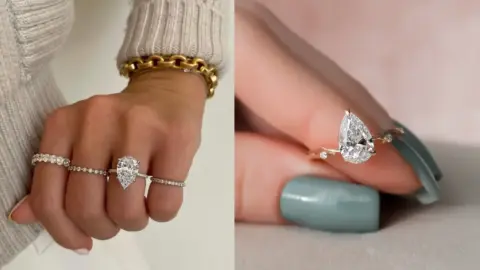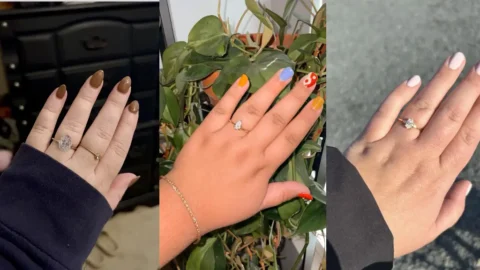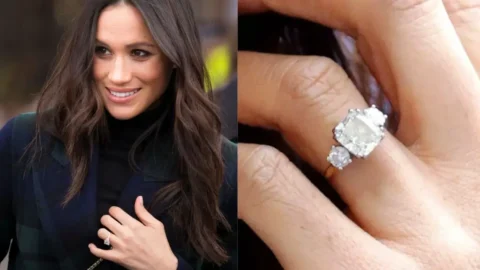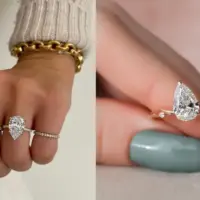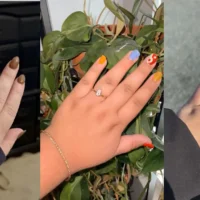When it comes to choosing Gold vs silver Engagement Ring the perfect engagement ring, two of the most popular choices are white gold and silver.
Each metal has its unique characteristics, advantages, and aesthetic appeal, making the decision somewhat overwhelming for couples looking for the ideal symbol of their love.
In this blog, we’ll dive into a detailed comparison of white gold vs silver engagement ring, focusing on their differences, advantages, and which might be the best fit for your unique style and budget.
Understanding White Gold vs Silver Engagement Rings
Before comparing the two, it’s important to understand what makes each metal distinct.
White Gold Engagement Rings: White gold is a mixture of yellow gold and other metals like palladium, nickel, or silver. It’s then coated with rhodium, which gives it its signature bright, white, shiny appearance. This is a more luxurious option often chosen for its elegant and timeless appeal.
Silver Engagement Rings: Silver, specifically sterling silver, is a naturally white, shiny metal composed of 92.5% silver and 7.5% of other metals, typically copper, for added strength. It’s a popular and affordable choice, although it lacks the same level of durability and shine as white gold.
White Gold vs Silver Engagement Rings: Key Differences

1. Durability
One of the most significant differences between white gold and silver engagement rings lies in their durability. White gold is typically more durable than silver due to the presence of stronger metals in its alloy mix.
White Gold: Thanks to the addition of metals like palladium and nickel, white gold engagement rings are more resistant to scratches and tarnishing. However, they may require periodic rhodium plating to maintain their bright, shiny finish.
Silver: While sterling silver is fairly durable, it can tarnish over time when exposed to air and moisture, especially when it’s not maintained properly. Silver engagement rings require more frequent care and cleaning to preserve their lustrous appearance.
2. Appearance and Shine
Both metals have an elegant white hue, but their shine and visual appeal differ.
White Gold: White gold engagement rings often have a more luxurious shine and a highly reflective surface due to the rhodium coating. This makes them look more expensive and sophisticated.
Silver: Silver offers a bright, shiny appearance, but it tends to be softer and more prone to losing its gloss, especially without regular cleaning.
3. Cost Comparison
Cost is another significant factor for many couples when selecting an engagement ring.
White Gold: Generally, white gold engagement rings are more expensive than silver due to the higher cost of materials and the manufacturing process. White gold’s durability and refined finish also contribute to its higher price.
Silver: Silver is a more budget-friendly option, making it an attractive choice for couples seeking an affordable yet stylish engagement ring. It provides a classic appearance at a fraction of the cost of white gold.
4. Maintenance and Longevity
Maintenance is an important consideration when choosing a metal for an engagement ring. White gold and silver both require upkeep to maintain their appearance.
White Gold: Over time, white gold rings may need to be replated with rhodium to maintain their pristine, white finish. However, when properly cared for, white gold engagement rings can last for generations without losing their beauty.
Silver: Silver rings can tarnish over time, especially if exposed to air or chemicals. Regular cleaning and proper storage are necessary to keep silver engagement rings looking shiny. Tarnishing can be easily removed, but over time, the ring may lose its luster.
Which Metal Is Right for You?
Choosing between white gold vs silver engagement rings ultimately depends on your preferences and budget.
Choose White Gold if:
You want a more luxurious, durable option with a bright, shiny finish.
You have a larger budget and want an engagement ring that will last for generations with minimal maintenance.
You’re looking for a metal that pairs well with diamonds and other gemstones.
Choose Silver if:
You’re on a budget but still want a beautiful, classic engagement ring.
You like the look of white metal but are okay with periodic maintenance.
You’re seeking an eco-friendly option, as sterling silver is more widely recycled than white gold.
Final Thoughts: White Gold or Silver Engagement Rings?
Both white gold and silver have their pros and cons, but ultimately, your decision should reflect your personal style, lifestyle, and budget. White gold engagement rings are a great choice for those seeking luxury, durability, and timeless beauty, while silver engagement rings are perfect for those looking for a budget-friendly yet elegant option.
By considering the factors like durability, appearance, cost, and maintenance, you can confidently make the best decision for your engagement ring.
Whether you opt for the refined elegance of white gold or the classic charm of silver, the most important thing is the love it represents.
Key Takeaways:
White gold is more durable and resistant to tarnishing than silver.
Silver is more affordable but requires more maintenance.
Both options offer stunning looks for an engagement ring, so choose based on your preferences and budget.
At KRK Jewels, we understand the significance of selecting the perfect engagement ring to symbolize your love and commitment.
Whether you’re drawn to the timeless elegance of white gold or the classic charm of silver, our collection offers a range of beautifully crafted rings that suit various tastes and budgets.
Our expert designers use only the finest materials, ensuring each piece is not only stunning but also durable enough to last a lifetime. With personalized options and exceptional customer service, KRK Jewels makes it easy to find the perfect ring that matches your unique style and story.




